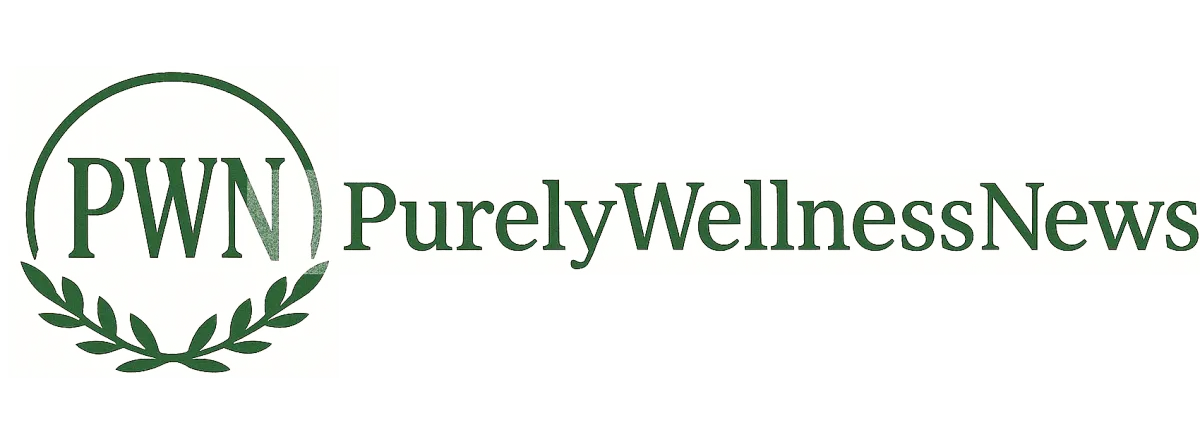
PWN Wellness Trends Sept 2 2025
The State of COVID-19 Vaccines in the U.S. (2025): Policy, Evidence, Patient Outcomes & What to Expect
Summary (TL;DR)
The U.S. continues seasonal “updated” COVID-19 vaccination campaigns (2024–2025 and a 2025–2026 formula planned for fall 2025) to match circulating Omicron-lineage viruses; CDC recommends updated vaccination for most persons aged ≥6 months, with extra doses for older adults and immunocompromised people. CDC+1
FDA and ACIP guidance and manufacturer authorizations have evolved: the FDA has approved and authorized updated mRNA vaccines for certain groups while narrowing some eligibility criteria recently, creating complexity for access. U.S. Food and Drug AdministrationAl Jazeera
Vaccine effectiveness (VE) against severe disease remains measurable and meaningful: analyses estimate tens of thousands of hospitalizations averted in recent respiratory seasons; effectiveness varies by variant, time since vaccination, age, and immune status. PubMedCDC
Safety monitoring continues; serious adverse events are rare, and the benefit/risk balance remains strongly favorable for those at higher risk of severe COVID-19. U.S. Food and Drug AdministrationCDC
1) What vaccines are authorized/approved now — and who the agencies recommend
Current landscape: The U.S. public-health agencies have transitioned to seasonal, strain-matched vaccines (updated annually, similar to influenza). The FDA approved and authorized updated mRNA COVID-19 vaccines for the 2024–2025 formula, and has advised manufacturers on a 2025–2026 monovalent JN.1-lineage formula to be used beginning fall 2025. The CDC (ACIP) recommended the 2024–2025 vaccine for all persons aged ≥6 months and advised additional dosing for adults ≥65 and people with moderate-to-severe immunocompromise. U.S. Food and Drug Administration+1CDC
Key practical points for the public (as of late 2025 guidance):
Most people ≥6 months: advised to receive the updated seasonal vaccine. Discuss with a clinician for children and certain clinical scenarios. CDC+1
Adults ≥65 and immunocompromised persons: recommended to receive two doses of the 2024–2025 vaccine series (timing per ACIP), with the possibility of additional doses for severely immunocompromised persons guided by shared clinical decision-making. CDC
Regulatory nuance / access changes: In summer 2025, reporting indicated that the FDA narrowed some eligibility/authorization pathways for updated COVID-19 vaccines—prompting news coverage and confusion about who can receive vaccines at pharmacies vs. clinical settings; check local pharmacy policies and clinician guidance. Al JazeeraABC News
2) Which vaccine formulas are in play — and why strains matter
2024–2025 vaccines targeted currently circulating Omicron-derived lineages (KP.2 / related JN.1 sublineages) and were rolled out to better match the antigenic profile of circulating viruses. The FDA and manufacturers regularly update recommendations for the next season; for fall 2025 the FDA advised JN.1-lineage–based (2025–2026) monovalent formulations to better align with viral evolution. Keeping the vaccine antigen matched to prevalent variants improves immune recognition and restores some protection against infection and severe disease. U.S. Food and Drug Administration+1
3) Effectiveness — what the evidence shows for preventing severe illness and hospitalizations
Real-world impact: Interim analyses and CDC estimates indicate updated seasonal vaccines substantially reduce severe outcomes. For example, CDC analyses estimated that vaccination averted tens of thousands of hospitalizations during the 2023–24 respiratory season. Peer-reviewed interim VE assessments for the 2024–2025 formulations document measurable protection against hospitalization and severe illness, though measured effectiveness against infection can be lower due to immune waning and antigenic drift. PubMedCDC
Key themes from the evidence:
Protection against severe disease remains the primary benefit. VE for preventing hospitalization and death is higher and more durable than VE against infection. PubMed
Waning and variant escape reduce protection from infection, so boosters/updated formulations are used seasonally to restore protection—especially for older and immunocompromised individuals. CDC
Prior infection contributes to population immunity and may lower measured incremental VE in populations with recent waves; this complicates VE interpretation but does not eliminate the vaccine’s value for high-risk groups. CDC
Numbers to cite: CDC estimated ~68,000 hospitalizations averted in the 2023–24 season by vaccination programs—a concrete measure of public-health impact. PubMed
4) Patient outcomes and who benefits most
Who benefits most: Older adults (≥65), people with chronic diseases (cardiopulmonary disease, diabetes, CKD), and immunocompromised persons derive the largest absolute benefit—reduction in hospitalization, ICU care, and death. The public-health strategy therefore emphasizes prioritized dosing for these groups and additional doses when indicated. CDCPubMed
Clinical outcomes observed: In vaccinated cohorts, clinicians have reported lower rates of severe pneumonia, ICU admission, mechanical ventilation, and shorter hospital stays compared with unvaccinated patients during matched variant waves—consistent with national VE and hospitalization-averted estimates. (See CDC MMWR and peer-reviewed VE reports for representative data.) CDCPubMed
5) Safety profile & surveillance — what we know
Overall safety: Large-scale safety monitoring (FDA, CDC VSD, VAERS passive reporting, and manufacturer post-authorization studies) continues to find that serious adverse events are rare and that the benefit/risk profile remains favorable for those at risk of severe COVID-19. Known risks (rare myocarditis with mRNA vaccines, rare anaphylaxis) are monitored closely, and guidance exists for clinicians to counsel and manage these events. U.S. Food and Drug AdministrationCDC
Special considerations:
Myocarditis/pericarditis: rare, generally mild and more frequent in younger males after mRNA doses; clinicians weigh age/sex risk when discussing vaccination. U.S. Food and Drug Administration
Immunocompromised persons: receive additional doses and are monitored for both safety and suboptimal immunogenicity; serologic testing is sometimes considered for individual decision-making. CDC
6) Regulatory process, authorization pathways & recent policy updates
FDA role: The FDA evaluates manufacturer data for updated formulations, authorizes/approves products (full approval or EUA), and issues labeling and use instructions. For 2024–2025 the FDA approved/authorized updated mRNA vaccines to match Omicron sublineages and has issued guidance for 2025–2026 strain selection. Recent FDA actions in 2025 included changes in authorization/eligibility that created operational complexity and media coverage—clinics and pharmacies have had to adapt. U.S. Food and Drug Administration+1Al Jazeera
ACIP/CDC recommendations: ACIP deliberates on target groups and dosing intervals. In 2024–2025 ACIP recommended updated vaccines for all ≥6 months and added a second dose recommendation for people ≥65 and immunocompromised individuals (with minimum intervals noted). These policy choices reflect balancing population benefit, safety, and logistical feasibility. CDC+1
Access & insurance: Insurance coverage generally follows ACIP/FDA guidance, but recent narrowing of eligibility in late 2025 prompted questions about pharmacy availability and whether prescriptions or clinic visits would be required for some groups—check local guidance and payer rules. Al JazeeraAARP
7) Operational & equity challenges
Logistics & supply: Seasonal updates require manufacturing, distribution, and clinic/pharmacy coordination. Rapid strain changes can complicate inventory planning and patient messaging. U.S. Food and Drug Administration
Equity: Vaccination coverage remains uneven—rural and underserved communities often have lower uptake. Policy shifts and confusing eligibility change can widen gaps, so targeted outreach (community clinics, mobile campaigns) remains essential. CDC
Public trust & communication: Conflicting media reports and policy shifts can erode trust. Clear, consistent communication from health authorities and clinicians about who should be vaccinated, why, and when is critical. Recent controversy in public health leadership and media attention to changes in authorization underline this risk. The Daily BeastThe Guardian
8) Practical guidance for clinicians & the public
For clinicians:
Prioritize vaccinating ≥65 and immunocompromised patients with the recommended dosing schedule. CDC
Offer updated seasonal vaccines for eligible patients ≥6 months and discuss risks/benefits individually for younger, healthy adults. CDC
Monitor for adverse events and report through VAERS/VSD; coordinate glucose/medication timing in high-risk patients as needed. U.S. Food and Drug Administration
For patients:
If you are ≥65 or immunocompromised, follow CDC guidance for additional doses and discuss timing with your clinician. CDC
If eligible, consider receiving the updated seasonal vaccine—especially if you have chronic health conditions. CDC
Seek care promptly for COVID-like illness; vaccination reduces the risk of severe outcomes but does not eliminate infection risk. PubMed
9) What to watch next (near-term horizon)
Fall 2025 vaccine rollout of the JN.1-lineage (2025–2026) monovalent vaccine and how quickly manufacturers and clinics ramp supply. U.S. Food and Drug Administration
Ongoing VE studies assessing updated formulations in real-world settings, especially against severe disease in elderly and immunocompromised populations. CDC
Regulatory/operational changes that affect pharmacy availability and reimbursement—follow FDA and state health department updates. Al JazeeraABC News
10) Quick references (key sources)
CDC — Staying Up To Date with COVID-19 Vaccines (guidance page). CDC
FDA — Approvals & authorizations for updated mRNA vaccines (2024–2025). U.S. Food and Drug Administration
FDA — Guidance on the 2025–2026 vaccine formula selection. U.S. Food and Drug Administration
CDC MMWR & ACIP slides — recommendations for 2024–2025 dosing and evidence summaries. CDC+1
Peer-reviewed interim VE estimates and hospitalization-averted analysis. PubMedCDC









